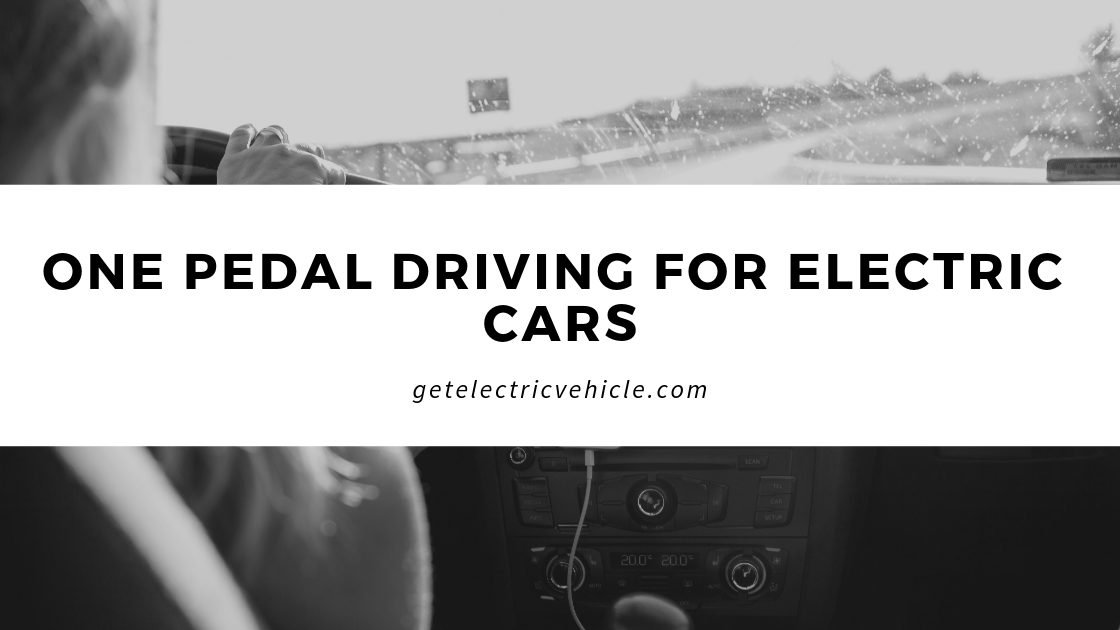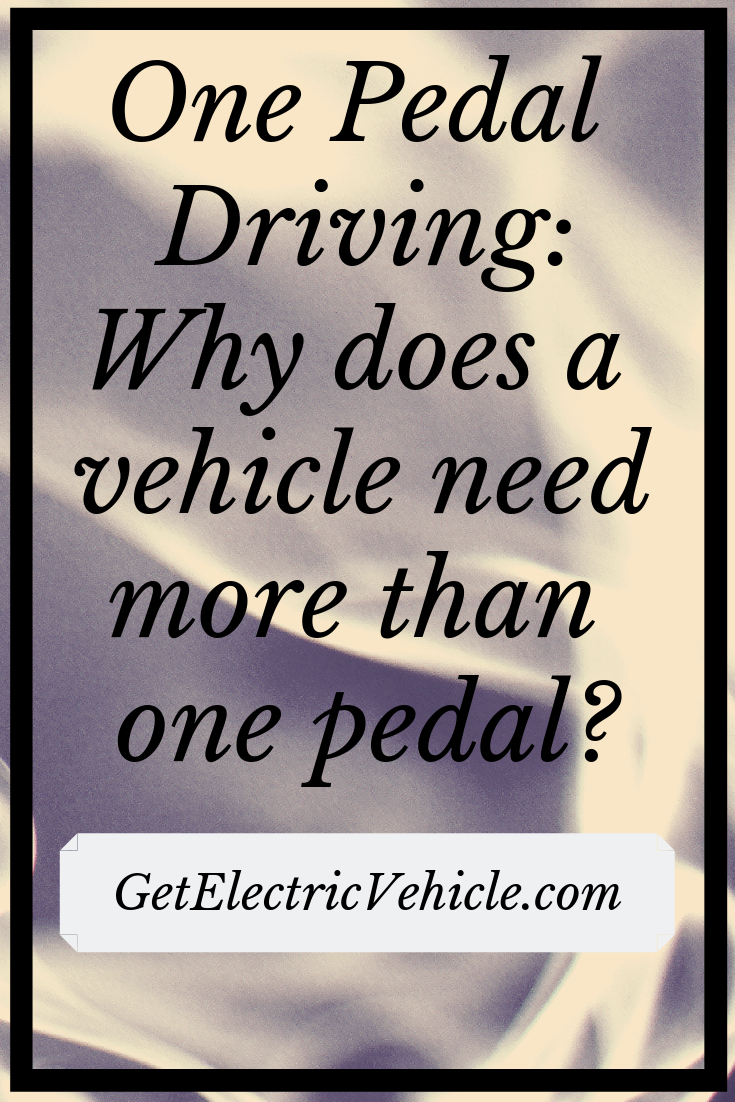
What is one pedal driving? Does a vehicle need more than one pedal? The technology changes and now we need just one pedal in a car!
There are three pedals in a conventional vehicle – Accelerator, Clutch, and Brake pedals. If they are with automatic gear transmission, then two pedals are sufficient. An actuator pedal and Brake pedal do the job.

Most of the Electric cars are single-speed transmission vehicles. Speed-torque characteristic of electric machines makes them most suitable for traction. The ability to meet high torque demands at low speed is the reason why a multispeed gearbox is unnecessary in an electric car.
You may read
- Basics of electric vehicle: Advantages, Challenges, and Classification -PDF
- What is an electric power train and hybrid power train?
Why do we need a brake pedal in a car?
Brake is mandatory in a vehicle, hence brake pedal. Why can’t the brake pedal and actuator pedal combined together?
In a car when we release the actuator pedal, fuel injection to the engine gets reduced and the vehicle slows down. Then the application of brake further reduces the speed and stops the vehicle.
Electrical energy to the motor reduces when the actuator pedal in an electric vehicle is released. As a result, the speed of the electric car reduces due to friction on the tires, and aerodynamic friction.
To completely stop the vehicle additional braking is required. In an electric vehicle that equipped with regenerative braking, when the accelerator pedal is released, the energy recuperation happens and it stores the regenerated energy in the battery of the EV.
But, regenerative braking alone can not bring the vehicle to complete standstill. Additional friction braking is also necessary for an electric vehicle to stop.
How does one pedal driving work in an electric vehicle?
Regenerative braking works when the actuator pedal of the vehicle releases. But it cannot provide 100% braking energy to stop a vehicle.
Do you know why?
The idea of a single pedal (e-pedal) driving arises with the regenerative braking technology. What if we can integrate both friction braking and regenerative braking together in the actuator pedal?
Then the use of brake pedal can be avoided in the vehicle.
When the driver releases the accelerator pedal, the speed of the vehicle reduces and regenerative braking happens. If the pedal is released further, the friction braking also comes to the picture and stops the vehicle.
Nissan Leaf comes to a complete stop in its “e-Pedal” mode and engages the hydraulic brakes to hold it in place.
Nissan Leaf – One Pedal Driving
The latest Nissan Leaf is equipped with one pedal driving feature.
With e-Pedal active and the driver’s foot removed from the actuating pedal, regenerative braking slows the Leaf at 0.20 g—which our bodies experience as gentle deceleration.
As the vehicle approaches a crawling pace and the motor’s ability to slow the car fades, the Leaf’s friction brakes automatically blend in to maintain the same rate of deceleration.
Here the advantage of Single Pedal driving comes. Manual deceleration could not maintain the same pace always applying the friction braking.
Once the car has stopped, e-Pedal will hold the Leaf in place on grades as steep as 30 percent, all without the driver ever touching the brake pedal.
Do we have a brake pedal in one pedal driving vehicles?
Yes, we do. There is one brake pedal in one pedal driving vehicle to use at emergency. The driver can apply the brakes manually to stop the vehicle in case of an emergency.
Nissan Leaf, Tesla, Chevrolet bolt, etc, had implemented one pedal driving feature in their vehicles to an extend.
Do you think this is a cool feature?
There is a mode selection switch to choose both single pedal mode and manual mode to drive a car.
What are some advantages of one pedal driving?
- It’s convenient to use – One we are familiar with the correct position of the e-Pedal, it would be convenient to use the single pedal driving feature of the electric car.
- Single pedal driving provides a smooth deceleration to the vehicle – The software-controlled deceleration would be smoother than the manual deceleration exerted by the driver.
Don’t forget to share the post with your friends and follow us on Facebook, LinkedIn, Twitter, Instagram, and YouTube!
Conclusion
Automotive technology advances day by day. One of the best inventions that makes a driver more comfortable driving an electric vehicle is one-pedal driving.
One pedal driving method avoids the use of brake pedal in an electric vehicle in normal driving conditions. The single pedal – “e-pedal” – does both the acceleration as well as braking. The driver can use the brake pedal in case it demands an emergency stop.
Key points
- Single pedal driving avoids the brake pedal in an electric vehicle
- Regenerative braking is prominent in a vehicle with single pedal driving
- A combination of regenerative braking and friction braking helps to stop the vehicle with a single pedal
